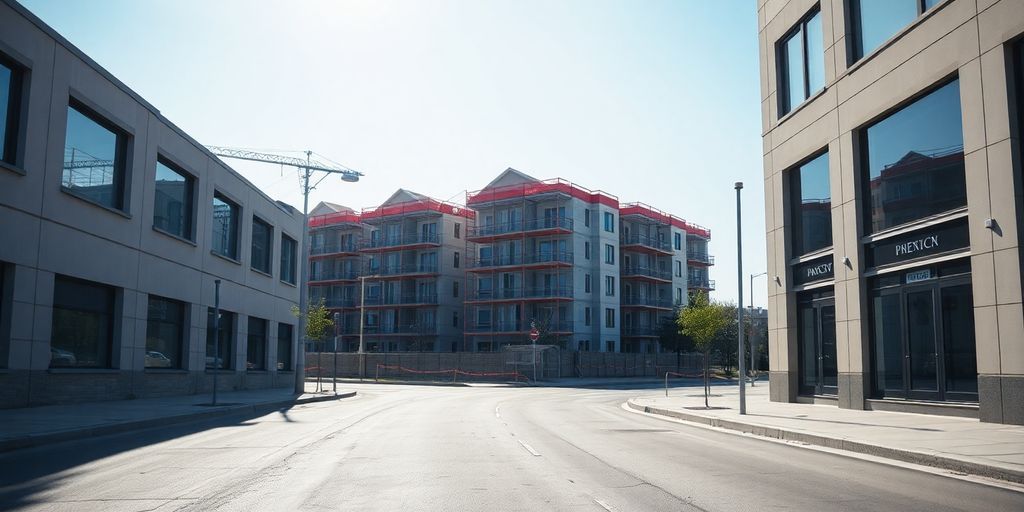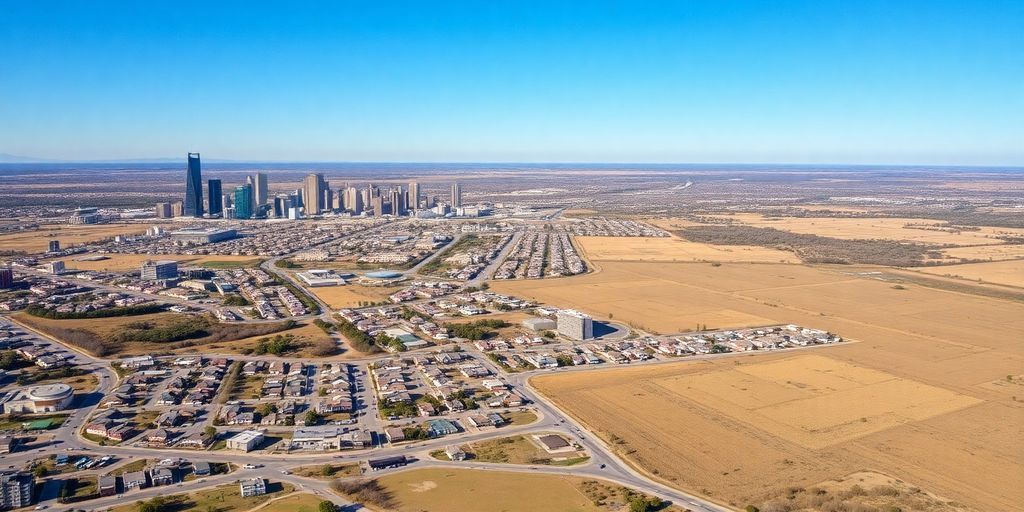California Real Estate Outlook 2025: What Buyers, Sellers & Investors Need to Know
Blog Author - Published Date
So, everyone's talking about the California real estate market trends for 2025. It's a big deal, right? With all the ups and downs lately, it's tough to know what's coming next. Are we looking at a big crash, or just a little dip? This article tries to clear things up a bit, giving you a heads-up on what to expect if you're thinking about buying, selling, or investing in California homes next year. We'll look at some key things that might shake up the market, from interest rates to where people are choosing to live.
Key Takeaways
- A full-blown housing market crash in California seems unlikely for 2025, but a slowdown or correction is definitely possible.
- Signs like homes sitting longer on the market and price reductions suggest the California housing market is cooling down.
- Investors might find some good chances in 2025, especially in specific areas, but they need to be careful and plan for the long run.
- The tech industry's health, or lack thereof, will keep playing a big part in how California home prices change.
- Where people choose to live, especially if they're leaving California, will affect housing demand and prices in different parts of the state.
Will the California Housing Market Crash in 2025?
The question on everyone's mind: will the California housing market crash in 2025? It's a complex issue with no easy answers. While a full-blown crash like we saw in 2008 seems unlikely, a significant correction is definitely possible. Several factors are at play, making it crucial to stay informed and prepared. The number of homes actively for sale has increased, marking the 16th consecutive month of annual inventory growth.
Factors Influencing a Potential Downturn
Several factors are contributing to the uncertainty. High interest rates are making it harder for people to afford homes. Affordability is a major concern, especially with elevated mortgage rates. Plus, there's been a noticeable decrease in buyer demand. All these things combined could put downward pressure on prices. It's a delicate balance, and any shift in these factors could change the outlook quickly.
The Likelihood of a Full-Blown Crash
Most experts don't predict a crash on the scale of 2008. The market is different now, with tighter lending standards and a more stable financial system. However, that doesn't mean we're in the clear. A significant correction, where prices drop by a noticeable percentage, is still a real possibility. It's important to distinguish between a correction and a full-blown crash.
A correction could present opportunities for buyers who have been priced out of the market, while a crash would have much more severe consequences for homeowners and the economy.
Here are some factors that could prevent a crash:
- Limited housing supply in many areas.
- Relatively healthy job market (outside of tech).
- Stricter lending practices compared to the pre-2008 era.
Regional Price Volatility
Not all areas of California will be affected equally. Expect to see more volatility in overheated markets like Los Angeles and San Francisco. Some regions might experience price declines, while others remain relatively stable. It really depends on local market conditions, economic factors, and population trends. Keep an eye on local data and consult with real estate professionals in your area to get a better understanding of what to expect.
Signs the California Housing Market May Be Cooling
The California housing market, known for its wild swings, might be showing signs of slowing down as we move into the latter half of 2025. After years of crazy price increases, things are starting to look a little different. It's not necessarily a crash, but definitely a shift that buyers, sellers, and renters should pay attention to. Let's look at some key indicators.
Increased Time on Market
One of the first signs that the market is cooling is that homes are staying on the market longer. Remember when houses would get snatched up in days? Those days might be fading. Homes are now sitting for weeks, sometimes even months, before finding a buyer. This increase in time on market suggests that buyers are becoming more cautious and are taking their time to evaluate their options. This is a big change from the frenzy we saw in previous years.
Reduced Asking Prices
Sellers are starting to realize that they can't ask for the moon anymore. We're seeing more and more price reductions as sellers try to attract buyers. This is a clear sign that the balance of power is shifting. It's not uncommon to see homes listed with multiple price cuts before they finally sell. This is especially true in areas where prices have been the highest, like parts of the Bay Area and Southern California. Keep an eye on California real estate market predictions to stay informed.
Declining Sales Volumes
Another key indicator is the decline in the number of homes being sold. Sales volumes are down compared to previous years, indicating that fewer people are buying. This could be due to a number of factors, including higher interest rates, affordability concerns, and a general sense of uncertainty about the future. The drop in sales volume is a clear signal that the market is not as hot as it once was. Here's a quick look at recent sales data:
| Month | Sales Volume (YoY Change) |
|---|---|
| January | -8.8% |
| February | -1.2% |
| March | -5.0% (Projected) |
It's important to remember that real estate is local. What's happening in one part of California might not be happening in another. Some areas are still seeing strong demand, while others are cooling off much faster. Pay attention to what's happening in your specific area.
These signs don't necessarily mean a crash is coming, but they do suggest that the California housing market is entering a new phase. Buyers might find more opportunities, while sellers might need to adjust their expectations. It's a market where being informed and prepared is more important than ever. Keep an eye on elevated mortgage rates as they continue to impact buyer decisions.
Is California a Good Market for Real Estate Investors in 2025?
Investors are definitely wondering if now's the time to jump in, or if they should wait for a bigger drop. The California market is always a mixed bag, and 2025 is no different. It really depends on your strategy and risk tolerance.
Risks and Opportunities for Investors
The cooling market definitely brings both risks and investment opportunities. On one hand, you've got declining demand and affordability issues that could impact rental income. On the other hand, downturns often create chances to buy low, especially if you've got the cash ready. It's all about being prepared to act when the time is right.
Identifying Promising Investment Regions
Not all areas are created equal. Some regions might be hit harder than others. Keep an eye on:
- The Central Valley
- Parts of the Inland Empire
- Outlying suburbs
These areas might not see as big of a price drop as major metros, making them potentially more stable investment opportunities.
Strategic Long-Term Planning
Smart investors are thinking long-term. They're not just looking for a quick flip. They're considering things like population trends, job growth, and local government policies. This kind of planning can help you weather any short-term market fluctuations.
Here's a quick look at some key factors for long-term planning:
| Factor | Consideration |
|---|---|
| Population Trends | Is the population growing or shrinking in your target area? |
| Job Growth | Are there new jobs being created? What industries are thriving? |
| Local Gov Policies | Are there any policies that could impact property values or rental income? |
It's a good idea to keep these in mind when making decisions.
Will the Tech Industry Influence Housing Prices?
The tech industry's impact on California's real estate is always a hot topic. In 2025, it's a mixed bag. Layoffs in 2023 and 2024 definitely cooled things down, especially in the Bay Area. Now, with some signs of a tech rebound, people are wondering if San Francisco's thriving tech industry will give housing prices another boost. But what happens if that recovery stalls?
Impact of Tech Layoffs on Housing Demand
Tech layoffs had a direct and noticeable impact. Fewer tech workers meant less demand for housing, especially in cities like San Jose and San Francisco. This led to increased inventory and, in some cases, price reductions. It's a simple supply and demand equation, and the layoffs definitely shifted the balance.
Potential for Tech Sector Rebound
There's hope on the horizon. New investments in areas like AI and clean tech could spark a resurgence. If these sectors take off, we could see hiring pick up again, which would, in turn, increase demand for housing. It's not a sure thing, but it's a possibility that many are watching closely. The big question is whether this rebound will be strong enough to offset the earlier losses.
Regional Dependence on Tech Jobs
Some areas are much more reliant on the tech industry than others. The Bay Area, for example, is heavily dependent. If the tech sector struggles, these regions will feel the impact more acutely. Other areas with more diversified economies might be more resilient. It really comes down to how much a region's economy is tied to the success of tech companies. Understanding these regional differences is key to predicting future trends.
The tech industry remains a critical variable in predicting California's housing market. If hiring surges again, expect upward pressure on home values. If not, we may see extended stagnation. It's a complex situation with a lot of uncertainty.
Here's a quick look at how different scenarios might play out:
| Scenario | Impact on Housing Prices | Regions Most Affected |
|---|---|---|
| Strong Tech Rebound | Increase | Bay Area, Silicon Valley |
| Stagnant Tech Sector | Stagnation | Bay Area, Silicon Valley |
| Further Tech Layoffs | Decrease | Bay Area, Silicon Valley |
Ultimately, the tech industry's influence on [economic factors] impacting housing prices will depend on its ability to innovate and create new jobs. It's a dynamic situation that requires careful monitoring.
Population Shifts and Their Effect on Housing
Out-Migration and Declining Demand
California's population dynamics are definitely shaking things up in the housing market. People are moving out, and it's not just a trickle. This exodus is driven by the high cost of living, especially housing, and folks searching for better opportunities elsewhere. This naturally leads to less demand in certain areas, which can put downward pressure on home prices. It's a pretty straightforward supply and demand situation.
Localized Market Cooling
It's not all doom and gloom, though. While some areas are seeing a slowdown, others are holding steady or even experiencing growth. Regional hotspots, like areas with new job opportunities or attractive amenities, might buck the trend. This means you can't paint the entire state with the same brush. What's happening in San Francisco might be totally different from what's going on in Sacramento. It's a market of regional hotspots.
Uneven Pricing Trends Across Regions
Because of these population shifts, we're seeing some pretty uneven pricing trends. Some areas are experiencing price drops, while others are holding their value. It really depends on the specific location and what's driving demand in that area. For example, coastal cities might see more of a decline due to out-migration, while inland areas could remain more stable. It's a mixed bag out there.
The California housing market is complex, and population shifts are just one piece of the puzzle. It's important to do your research and understand the specific dynamics of the area you're interested in before making any decisions.
Here's a quick look at how different regions might be affected:
- Coastal Cities: Potential price declines due to out-migration.
- Inland Areas: More stable prices, but growth might be limited.
- Areas with New Job Growth: Potential for price increases due to increased demand.
And here's a table showing some estimated population changes:
| Region | Estimated Population Change (2024-2025) |
|---|---|
| Los Angeles | -1.5% |
| San Francisco | -2.0% |
| Sacramento | +0.5% |
| San Diego | -0.2% |
Home Sales and Builder Sentiment
Declining Existing and New Home Sales
It's no secret that home sales, both existing and new, have been on a downward trend. Several factors contribute to this, including higher interest rates earlier in the year and general economic uncertainty. The lock-in effect, where homeowners are hesitant to sell because they don't want to give up their low mortgage rates, also plays a role. This has created a situation where fewer homes are available, impacting overall sales volume. Market data is showing this trend clearly.
Cautious Builder Sentiment
Builder sentiment is closely tied to the overall health of the housing market. When builders are confident, they start new projects, increasing the housing supply. However, rising material costs and concerns about future demand have made them more cautious. Fewer permits are being issued, and construction volumes are down, indicating uncertainty about the market's direction. This cautious approach can further limit the supply of new homes, potentially exacerbating existing inventory issues.
Impact on Future Construction
The current state of home sales and builder sentiment has significant implications for future construction. With builders hesitant to start new projects, the supply of new homes is likely to remain constrained. This could lead to increased competition for available properties and potentially put upward pressure on prices, especially if demand picks up. A thorough demand-supply analysis is needed to understand the long-term effects.
The slowdown in construction activity could have a ripple effect on the broader economy, impacting jobs in the construction industry and related sectors. It's a situation that requires careful monitoring and strategic planning to ensure a stable and sustainable housing market.
Here's a quick look at how sales have changed over the past few years:
- 2023: 257,900 homes sold
- 2024 (projected): 275,400 homes sold
- 2025 (forecast): 304,400 homes sold
Mortgage Rates and Affordability in 2025
Projected Decline in Interest Rates
Experts predict a slight dip in mortgage rates as we move into 2025. The average 30-year fixed mortgage interest rate is projected to fall to around 5.9%, down from 6.6% in 2024. While still higher than the pre-pandemic rates, this decrease could offer some relief to potential homebuyers. This is largely due to expectations that inflation will moderate, averaging around 2.0% in 2025. It's worth noting that even with this decline, rates will remain above the historical lows seen in recent years.
Impact on Buyer Affordability
Even a small drop in interest rates can have a noticeable impact on affordability. Lower rates translate to lower monthly mortgage payments, making homeownership a bit more accessible. However, affordability remains a significant hurdle for many, especially first-time buyers. Home prices in California are still high, and even with moderating rates, the overall cost of buying a home can be daunting. The slight increase in available homes may help, but demand is still expected to outpace supply, keeping prices elevated.
Strategies for First-Time Buyers
For those trying to break into the California housing market, a few strategies might help:
- Shop around for the best mortgage rates: Don't settle for the first offer you receive. Compare rates from multiple lenders to find the most favorable terms.
- Consider smaller down payments: While a larger down payment can lower your monthly payments, it's not always feasible. Explore options for low-down-payment mortgages.
- Look into first-time homebuyer programs: California offers various programs to assist first-time buyers with down payment assistance and other resources.
It's important to remember that buying a home is a long-term investment. Don't rush into a purchase if you're not financially ready. Take the time to assess your budget, explore your options, and make a decision that aligns with your financial goals.
Here's a quick look at how sales and prices are expected to change:
| Year | SFH Resales (000s) | % Change | Median Home Price |
|---|---|---|---|
| 2023 | 257.9 | N/A | $814,000 |
| 2024 | 275.4 | 6.8% | $869,500 |
| 2025 | 304.4 | 10.5% | $909,400 |
The projected increase in home sales suggests a more active market, but affordability will continue to be a key factor influencing buyer behavior.
Conclusion
So, what's the takeaway for California's real estate scene in 2025? It looks like things are going to be a bit of a mixed bag. We're probably not looking at a huge crash, but don't expect prices to just keep shooting up everywhere either. Buyers might find some good chances, especially if they're okay with looking in different areas or using some of those special loan programs. For sellers, it's still a decent time, but maybe not as crazy as it used to be. And investors? They'll need to be smart about where they put their money. The main thing is that the market is changing, and staying on top of what's happening in your specific area is going to be key. It's all about being ready for whatever comes next.
Frequently Asked Questions
Will California's housing market crash in 2025?
While a big crash like 2008 isn't expected, California's housing market is cooling down. This means prices might drop a bit in some areas, and homes could take longer to sell. It's more of a slowdown than a collapse.
What are the signs that the housing market is cooling?
You'll likely see homes staying on the market for more time, sellers lowering their asking prices, and fewer homes being sold overall. These are all signs that the market is becoming less heated.
Is 2025 a good time to buy a home in California?
It could be. With prices potentially easing, there might be good chances to buy at a lower cost. However, it depends on your financial situation and if you're looking to invest for the long run.
How will tech jobs affect housing prices?
The tech industry has a big impact. If tech companies have more layoffs, it could make housing demand go down in places like San Francisco and San Jose. But if the tech world bounces back, it could help housing prices go up again.
What happens when people move out of California?
When people move out of California, it can lower the demand for homes, which might lead to lower prices. But this won't happen everywhere at the same rate; some areas might see bigger changes than others.
Will lower mortgage rates make homes more affordable?
Mortgage rates are expected to go down a little in 2025, which could make it easier for people to afford homes. This is good news for first-time buyers, but homes will still be pretty expensive in many areas.














